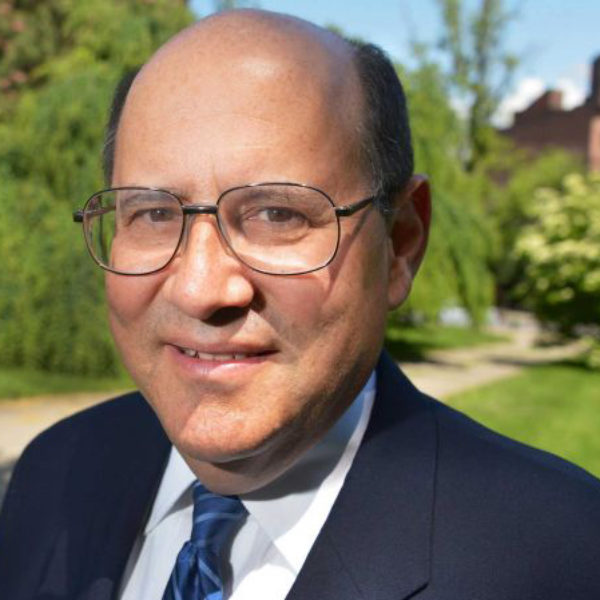
A Jewish boy celebrates his bar mitzvah at the Wailing Wall in Jerusalem. Image by Yonatan Sindel/Flickr (CC BY-NC-SA 2.0)..
Ritual Is Poetry in Action
True to his playfulness, my mentor, the late Rabbi Chaim Stern, would open his sermon by describing a cartoon — in one case, a cartoon displaying two photos. The top photo showed smiling babies, sparkle in every eye. The bottom photo presented sullen subway strap hangers with glum passengers on their daily commutes. The caption read, “What happened?”
Each of us knows what happened, how it happened, and how the hopeful enthusiasm of youth turned grim and gray. Each of us wrestles with the same spiritual challenge, ever so noticeable in these days of uncertainty. As Rabbi Stern pointed to the problem, he also summed up the response with the words:
“Ritual is poetry in action.”
He identified the opportunity to recognize the spirituality in the routine, and recapture lost enthusiasm and hope.
Chaim, who always preferred to be called by his first name, was the foremost liturgist of Reform Judaism. He edited Gates of Prayer and Gates of Repentance, the foundation of the denomination’s worship, along with more than a dozen additional works that offer uplift and inspiration to people of many different faiths.
Chaim considered himself first an author, primarily a religious poet. He also possessed a mild mischievous streak. An unwavering fan of the New York Yankees, he played with language as an ace pitcher would hurl a baseball to swerve, dip, and arrive at the precise speed and location.
When Chaim said, “Ritual is poetry in action,” he wasn’t just interested in promoting the worship services that his liturgical writings supported. He presented an image to describe the spiritual potential of ritual.
For instance, the poet in Chaim considered the morning’s words from a parent that have a school child dressed and ready within minutes. Chaim would recast that routine household communication as a poem — selecting, re-positioning, and augmenting the very same nouns, verbs, and other parts of speech to shed beauty, insight, and inspiration.

“Ritual is poetry in action” means that ritual does for behavior what poetry does for words; religious deeds grace ordinary activities the way poetic language elevates commonplace communication. When it comes to ritual, Chaim might sit down at the kitchen table for a workday solo lunch, typically the banana and low fat cottage cheese he’d pick up at the Grand Union on the way home from the Temple. Nothing special here. But when he prefaced his simple meal with a ritual prayer, he’d locate the contents and consumption of a routine lunch within a spiritual framework.
Thus a ritual contributes spiritual elevation to an ordinary deed as a poem ennobles casual language. Ritual allows for a broadened perspective on life. “Ritual is poetry in action” when a wedding ceremony provides a spiritual context for looking back on years of day-in, day-out parenting, a culmination and tallying of hours devoted to car pools and after school activities, the challenge, commitment, patience and love. Ritual calls for taking pause, for reflection on the labors and wonders of providing for and witnessing an emerging adult. A wedding ritual gives the big picture — and thus is a portal to spirituality — to a parent.
“Ritual is poetry in action” at worship when liturgy, community and learning punctuate a week of labor. The spiritual pause at the close of a work week offers an opportunity for stock-taking and renewal. Worship services provide time for considering the rote behaviors — picking at the office computer keyboard or pushing the cart down the supermarket aisle — in a different and elevated context. Worship is an occasion to consider what the daily grind adds up to. Ritual identifies and establishes meaning that already abides — unnoticed until then — in a person’s routine behavior.

Now for the baby turned adult commuter and bringing spirituality to the humdrum: People point out the tension between the sacred and the profane. But the profane is not the real issue. The profane is blatant; folks know it when they see it. The real religious issue is the more subtle tension between the sacred and the ordinary, between what his holy and what is routine.
Of three religious dimensions, holy, profane and the ordinary, it is in the ordinary that the spiritual danger abides. The danger is in the acceptance of the monotonous, in the bubbling baby turned sullen subway straphanger, the feeling that life is an empty exercise in going through the motions, that a person’s labors matters very little to others or oneself. Through ritual, a person renders the monotonous in a spiritual context, recognizing the contribution to a larger, overarching goal — contributions to family, community or the self. Religious community, worship and celebration, these acts of faith re-structure the ordinary as sacred.
Ritual addresses the dilemma in the cartoon that Chaim talked about. It speaks to the tragedy of the once cheerful baby grown into a listless workaday commuter. When life gets eaten up by recurring obligations, when the spirit withers in the hours between punching-in and punching-out, when dreams of financial security melt into economic challenge, life cries out or uplift — for the ritual that makes poetry of action.

